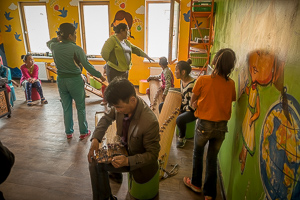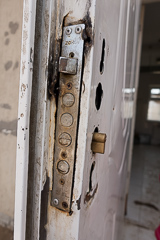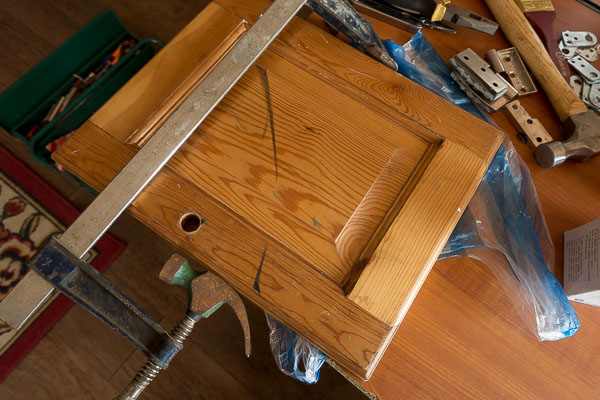Mr. Fixit Meets Mongolia

Music Teacher, Broken Yatag
Lotus Children's center is just at the edge of Gachuurt, a village just east of Ulaanbaatar on a hard bend in the Tuul River. Depending on the day and your bus connections, it usually takes between one and two hours to catch connecting buses and hike the mile of dirt road up the hill to the center. (I usually leave mid-morning and plan to arrive at eleven or so.) Most days there is a list of things to work on that would not seem like a big deal if I were living in the United States. Three years in Mongolia have taught me many things, and expanded my imagination for the difficulty in completing simple tasks. It turns out that much of my "skill" in fixing things depends on knowledge of the proper tools and materials. In this country, where both tools and materials are in short supply, that knowledge becomes a relatively useless starting point.
There is no good translation here for a hardware store, and there certainly are no Home Depots or Wall Marts. (Well Mart—several stores scattered across the country, is not the same.) Certainly it is possible to get tools, but it is also possible and likely to lose them. It is common for tools—bought to accomplish a specific project—to disappear with the people hired to use them, which is why I have spent a fair amount of time driving nails with stones. There is a toolbox at Lotus that I have been entrusted with which contains screwdrivers, pliers, and some combination wrenches. Some weeks it contains a hammer. Other tools have been purchased, including power tools—saws, drills, air nailers—though it has been hard to keep track of the parts needed for these to be useful. Cordless tools end up with batteries or chargers missing. For several months many tools were locked in a small room inside the bakery, which protected them from theft. Then one day the keys to that room vanished for six weeks, leaving the staff here practically tool-less.

Helper

Door Repair, Before Dough
While I hold the lockset in place with one hand, I am scratching my head with the other. I have many good ideas, but no parts or material to make them work. Here, behind the kitchen, there is no shim, no wood, no cardboard—only what the cook has thrown out for the dogs. But in that, is some old dough. It is dried out but still pliable. Good ideas having failed, it's time to resort to a bad idea. It is the first time, and I hope the last, that I will fix a door with bread dough.
Frustrating as it can be, I have come to terms with the process, doing whatever I can do every week. With or without my repairs, the important work continues at the children's center. I have worked on cars, doors, plumbing, musical instruments, vacuum cleaners, cabinets, beds, and gers. None of these tasks matches the daily care provided by the staff for the many children here.
